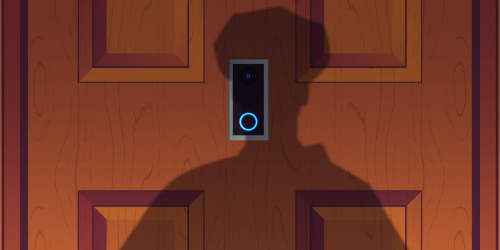As governments around the world continue to seek solutions to prevent the spread of COVID-19, companies are eager to sell their technology as a silver bullet to defeating the virus. The public already has seen privacy-invasive proposals for geolocation tracking and face recognition. Now, some vendors of surveillance equipment are advocating for the use of thermal cameras that would supposedly detect people who may be infected with the virus and walking around with a fever. These cameras threaten to build a future where public squares and sidewalks are filled with constant video surveillance—and all for a technology that may not even be effective or accurate at detecting fevers or infection.
Thermal cameras are still surveillance cameras. Spending money to acquire and install infrastructure like so-called “fever detection” cameras increases the likelihood that the hardware will long outlive its usefulness during this public health crisis. Surveillance cameras in public places can chill free expression, movement, and association; aid in the targeted harassment and over-policing of vulnerable populations; and open the door to face recognition at a time when cities and states are attempting to ban it.
During a pandemic, it may be prudent to monitor a person's body temperature under specific circumstances. Hospitals are checking patient and staff temperatures at the door to make sure that no one with a fever unknowingly exposes the people inside the facility to the virus. In the San Francisco Bay Area, wearable rings are constantly monitoring the temperature of doctors and nurses treating COVID-19 patients to immediately alert them if they start to develop symptoms. This kind of tech can pose privacy risks depending on the privacy policy of the company that manufactures the rings, the hospital’s own privacy policy, the data the technology collects, and who has access to that data. But these more focused programs are a far cry from dragnet surveillance cameras constantly surveilling the public—especially if those cameras don’t function effectively.
Experts are now concluding that thermal imaging from a distance—including that in camera systems that claim to detect fevers—may not be effective. The cameras typically only have an accuracy of +/- 2 degrees Celsius (approximately +/- 4 degrees Fahrenheit) at best. This is cause for major concern. With such a wide range of variance, a camera might read a person's temperature as a very high 102.2 degrees Fahrenheit when they are actually running an average 98.5 degrees Fahrenheit. What’s more, human temperatures tend to vary widely, as much as 2 degrees Fahrenheit. Not only does this technology present privacy problems, but the problem of false positives can not be ignored. False positives carry the very real risk of involuntary quarantines and/or harassment.
Thermal imaging seems even less likely to solve the COVID-19 pandemic given that a large number of people spreading the virus are doing so unknowingly because they are asymptomatic or have mild symptoms—mild enough to avoid triggering a “fever detecting” camera, even if it were running with perfect accuracy.
During this current moment, when governments are trying to hinder the spread of a contagion, technology companies are scrambling to prove that their goods are the solution we’ve been looking for. And while some of these companies may have tools that can help, a new network of surveillance cameras with dubious thermal measuring capabilities is not a tool we should deploy.













